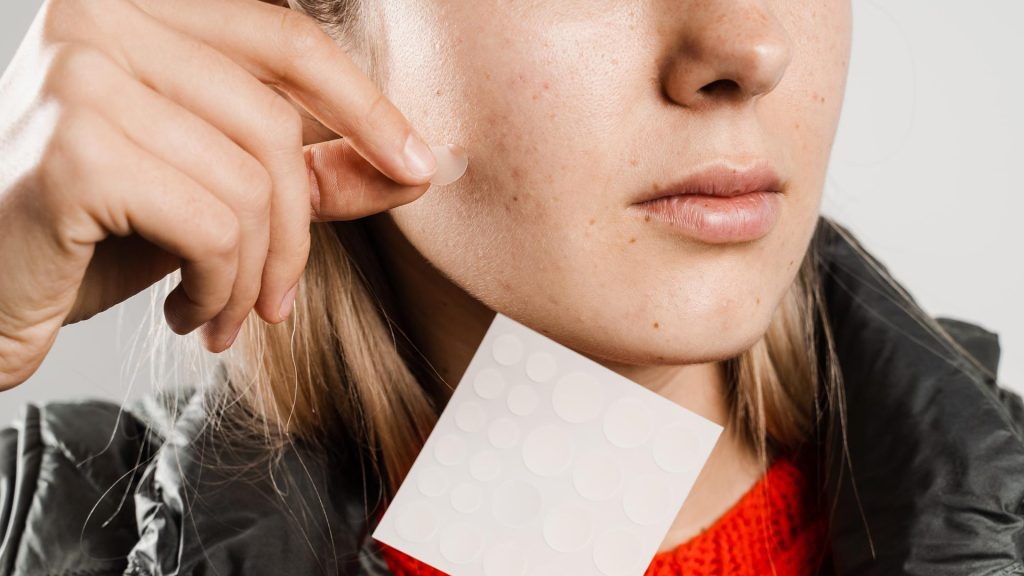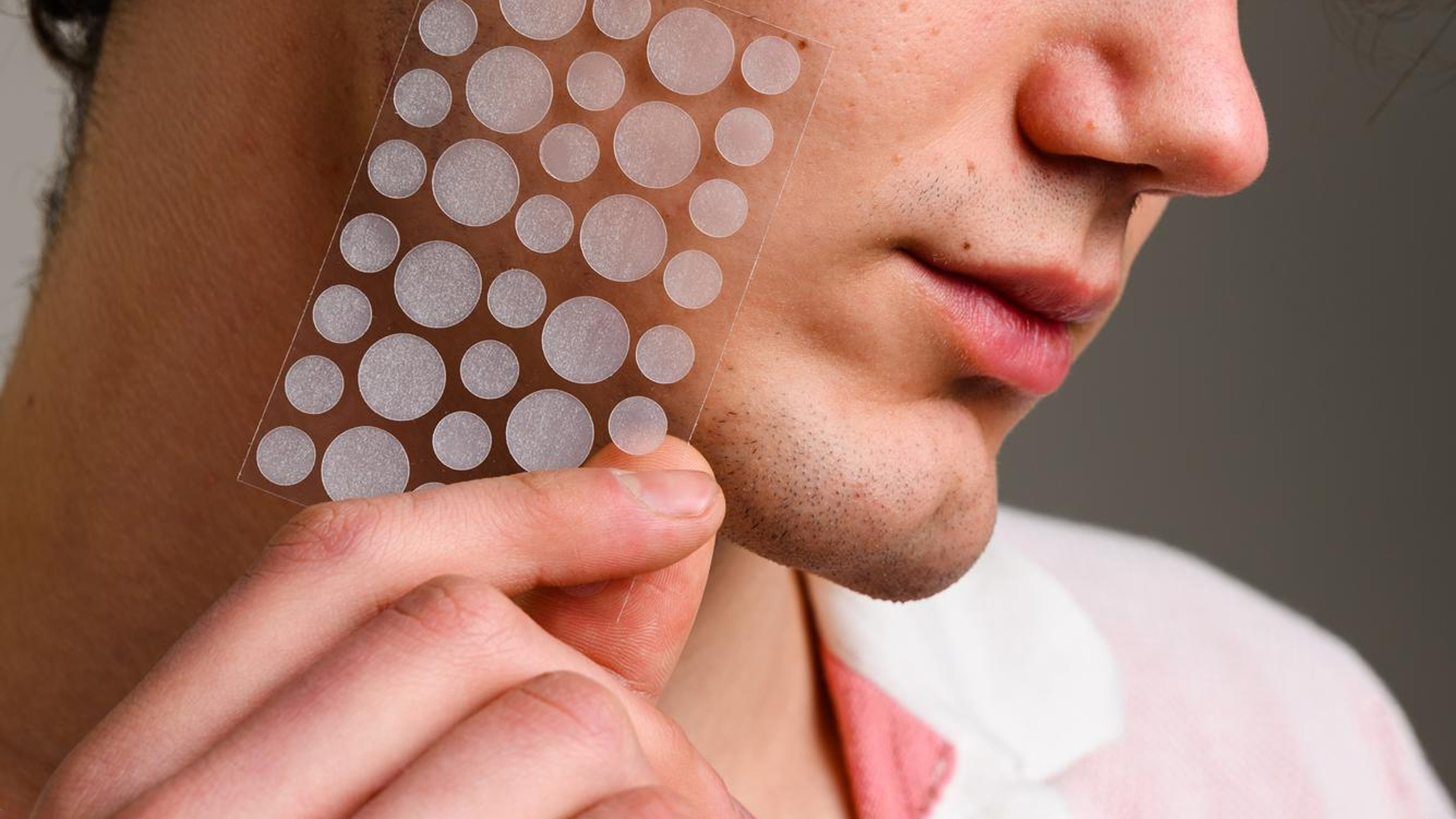If you’ve ever dealt with a sudden breakout, you know the frustration that comes with it. You try to leave it alone, but it’s hard to resist the urge to pick or squeeze. Fortunately, there’s a simple yet effective solution that’s been gaining popularity – pimple patches.
These tiny, barely noticeable stickers claim to zap zits overnight. If you are wondering what are pimple patches, how do they really work? Let’s dive into this article to explore their benefits, ingredients, and tips for using them effectively.
What Are Pimple Patches?
Pimple patches are small, sticky stickers designed to be placed directly over a pimple. They come in different shapes and sizes which makes them ideal for tackling single spots to larger breakouts. Pimple patches are praised for their ability to extract impurities, such as pus and oil, from the skin.
These patches contain active ingredients that help treat acne and prevent from irritation. They are also designed to protect the pimple from external factors like dirt, bacteria, and your own hands.
The Key Ingredients in Pimple Patches
Pimple patches works like magic, you’ll notice reduction in swelling and redness. Some target whiteheads, while others are more suited for cystic acne. Following are the most common types and ingredients used in pimple patches:
1. Hydrocolloid Patches: These are the most common type of pimple patches which are made from a material called hydrocolloid. They absorb excess fluid from pimples, especially whiteheads and create a moist environment that helps speed up healing. The hydrocolloid gel protects your skin from infection at the same time. Hydrocolloid patches don’t contain active acne-fighting ingredients, but they help draw out impurities and reduce inflammation.
2. Salicylic Acid: Known for its acne-fighting properties. Salicylic acid helps to exfoliate the skin, unclog pores, and reduce redness. Some patches are infused with salicylic acid which makes them more effective for treating active breakouts.
3. Tea Tree Oil: A natural ingredient with antibacterial and anti-inflammatory properties. Tea tree oil help kill acne-causing bacteria and soothe the skin. Some patches include this ingredient to reduce the size of the pimple and prevent from infection.
4. Niacinamide: It is a powerful antioxidant which helps to reduce redness, inflammation, and hyperpigmentation. Patches containing niacinamide are ideal for preventing scarring after the pimple has healed.
5. Micro-needling Patches: For those stubborn cystic pimples, there are microneedling patches. These patches contain tiny, dissolvable needles which are made from skin-loving ingredients that penetrate the skin’s surface. It delivers active ingredients like hyaluronic acid or salicylic acid deep into the skin to speed up healing.
How Do Pimple Patches Work?

Pimple patches create a protective barrier over the blemish, which helps in several ways:
1. Absorb Impurities: Hydrocolloid patches act like sponges that draws out fluids and pus from whiteheads while keeping the area clean and moist. This helps reduce the size of the pimple without causing it to rupture or spread bacteria.
2. Prevent Picking: Using them gives you one of the biggest benefit; it acts as a barrier preventing you from touching, picking or squeezing your pimple . This also reduces the chances of infection, scarring, and further inflammation.
3. Targeted Treatment: Pimple patches with ingredients like salicylic acid or tea tree oil deliver treatment for specific solution, helping to kill bacteria. This also reduces swelling and speed up healing.
4. Shield from External Irritants: Pimple patches protect the affected area from dirt, pollution, and makeup otherwise it can worsen the pimple or slow down the healing process.
How to Use Pimple Patches Effectively
To get the most out of your pimple patches, follow these simple tips:
– Cleanse your skin: Before applying a patch, ensure your skin is clean and make sure to dry it completely. This helps the patch stick on better and allows it to work more efficiently.
– Choose the right patch: If you have a whitehead, opt for a hydrocolloid patch. For deeper, cystic pimples, consider a patch with salicylic acid or micro-needles.
– Leave it on overnight: While some patches can be worn during the day but leaving them on overnight allows for better absorption and healing. In the morning, you’ll likely notice that the patch has turned white as it absorbs fluid from the pimple.
– Don’t reuse: Pimple patches are intended for single use. Once you’ve removed the patch, discard it and apply a new fresh one if needed.
– Leaking pimple: If your freshly picked pimple is leaking or oozing, be sure to cleanse the spot first. Then apply the pimple patch.
– Follow up your skincare routine: After removing the patch, gently cleanse the area and continue with your usual skincare routine. Consider applying a light, non-comedogenic moisturizer to keep your skin hydrated.
Do Pimple Patches Work for All Types of Acne?

Pimple patches can be a game-changer, highly effective for treating certain types of acne although they may not work for all blemishes. It can be more effective for whiteheads and smaller blemishes. Meanwhile deep cystic acne or blackheads may require alternative treatments. However, patches infused with active ingredients like salicylic acid or micro- needling patches can help reduce the size of cystic pimples over time.
It’s also important to note that pimple patches aren’t a cure for acne but rather a tool for managing breakouts. If you’re dealing with frequent or severe acne, it’s best to consult a dermatologist for a personalized treatment plan.
Are There Any Downsides To It?
Overall, pimple patches are a safe and effective option for treating occasional breakouts. However, some people may find that patches with active ingredients like salicylic acid or tea tree oil can be a bit too harsh for sensitive skin. If you experience any irritation, it’s best to stick with plain hydrocolloid patches, which are generally well-tolerated by all skin types.
Final Thoughts
Pimple patches have revolutionized the way we deal with breakouts. Whether you’re battling a single spot or dealing with regular flare-ups, these tiny patches can help speed up healing, prevent scarring, and keep you from picking at your skin. While they’re not a one-size-fits-all solution for acne, they’re a great addition to your skincare toolkit. So the next time you feel a pimple coming on, reach for a pimple patch and let it work its magic overnight!

